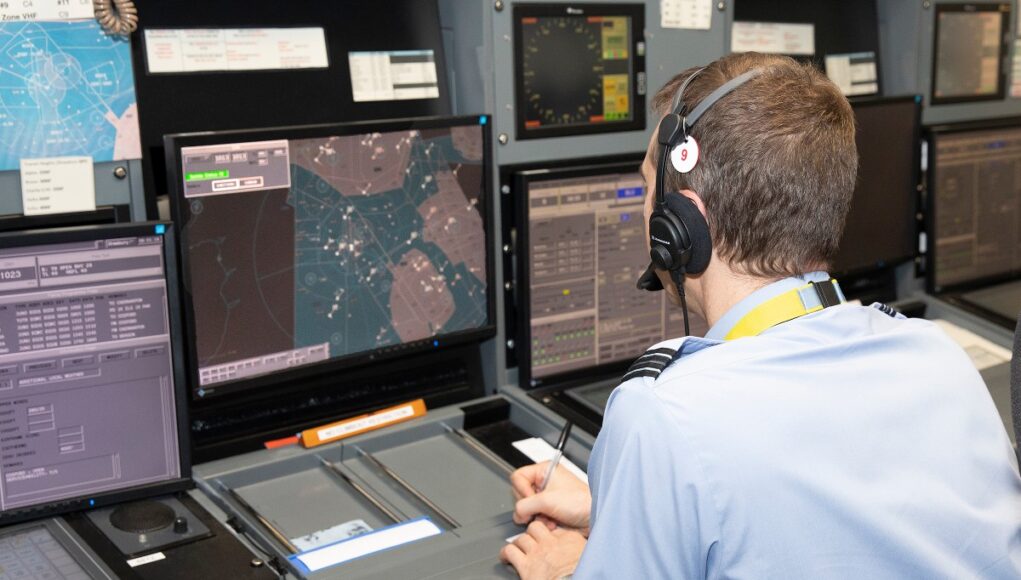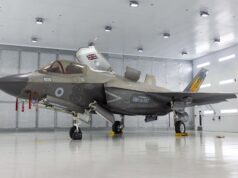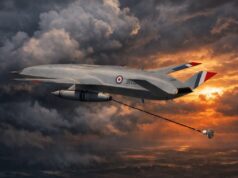The new system has been installed at RAF Shawbury (before rolling out to 60 other military sites around the world) under a £1.5-billion contract placed by DE&S.
Initial Operating Capability has been declared on the first total ‘Marshall Air Traffic Management Solution’ at the base – home of the Helicopter Flying School.
“Variants of this solution will now be rolled out across more than 60 MOD sites in the UK and overseas by 2024, including Cyprus, Gibraltar and the Falkland Islands. Programme Marshall integrates and supports modern, state-of-the-art equipment with existing infrastructure at MOD airfields to enable safe and resilient military flying operations in support of the RAF, Royal Navy and British Army.
Around 300 jobs have been created across the UK since the contract was awarded by DE&S to Aquila Air Traffic Management Services Ltd in 2014 – a joint venture between Thales and NATS (formerly known as National Air Traffic Services) – and is expected to save the taxpayer up to £317-million over the next 22 years.”
Sir Simon Bollom, CEO of DE&S, said:
“This is a key milestone in a programme that is vital to front-line capability. It is an excellent example of collaboration between DE&S, the RAF and industry to provide UK Armed Forces with the technology to do their job effectively and safely.”
The contract delivers a service provision arrangement providing “improved reliability, supportability, quality of service and cost savings by using Aquila Engineering teams to maintain the equipment”. To date, service availability levels have been high, including throughout the global pandemic. It includes a £400m investment in advanced surveillance radars and a wide range of sophisticated equipment such as tower systems, new surveillance/navigation aids and radios.
You can read more about this directly from the source here.














A good example of cost cutting by replacing expensive uniform posts with lower cost civilians. How you view this may depend on past loyalties.
Will these support engineers be weapon and NBC
trained to protect the equipment in a time of conflict? Sorry I forgot, that will be Serco’s job.
That’s not strictly true the people cost will be more as private sector wages are much higher. You would also require security clearances which would push wages even higher. I suspect they are saving money on the system side but let’s see if they really do these things have a habit of being more expensive than they first appear.
Other employment costs have to be added, like index linked military pensions.
Since when, the civilian ATC personnel represents the lower cost alternative?!
It’s a matter of reliability, integrity, physically and mentally fitness of the human resource involved, who are able and willing to support flight safety in a fast changing, high-tech based, extremely challenging environment. Uniform, be it military or civilian, has very little to do with it.
Very valid points but they are not a cost.
And in a war? Would civvies come into work or go home?
I thought Marshall was purely about tech, not replacing RAF personnel in the role!
I also wonder about security considerations.
I guess that also depends on how willing the civvies are to work 24/7 and operate in a hot environment if required?
My concern as well.
Yes but is the RAF left with these days when it comes to jobs or same for any of the other services – constantly seem to outsource.
The policy does seem to outsource wherever possible in a desperate drive to reduce costs above all else. This has to be taken into account when the MoD quotes figures in the military. There are growing numbers ‘in’ but ‘not in’ the figures. Mind you this is nothing compared to what is likely to happen in the NHS as part of a trade deal with the US.
Triggering again Ivan ? lol
Certainly triggering you. I suggest you raise your ‘he’s an Ivan’ threshold to a more believable level.
Interestingly they have cut the manning in the towers to follow the Marshall guidance. Unfortunately the ATC towers will loose manpower and flexibility as they will no longer have dedicated drivers.